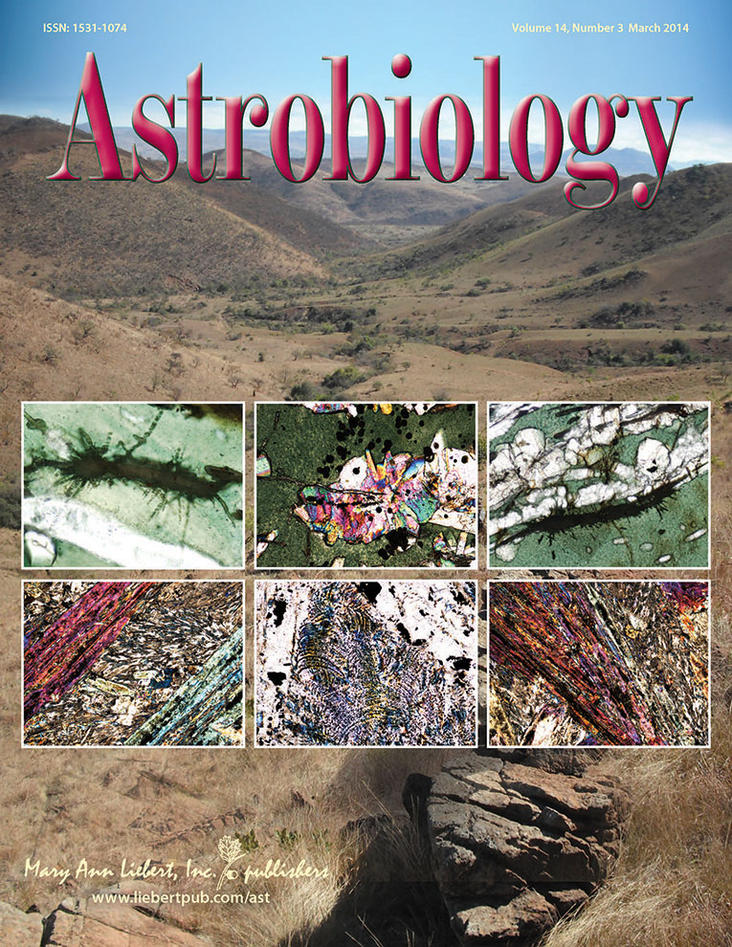Astrobiology
Astrobiology is the study of the origin, evolution, and distribution of life in the universe. Research on early Earth environments and the earliest traces of life is central to understanding how life emerged and evolved on our young planet. Using early Earth as an astrobiological baseline, we can extrapolate and explore the concept of habitability on other rocky planets in our solar system and beyond.

Main content
The exceptional early Archean rocks of the Barberton greenstone belt (South Africa) provides us with a unique testing ground for developing critical approaches and high-resolution analytical techniques to detect evidence for life beyond our own planet. Comparing these early Archean rocks to similar rocks on modern Earth helps us to draw bridges that furthers our understanding on how the early Earth worked and has changed as a habitable planet.
The NASA Astrobiology Roadmap (2008) specifies seven scientific goals and our group works on topics relevant to many of these goals:
(1) understand the nature and distribution of habitable environments in the universe;
(2) explore for habitable environments and life in our own Solar System;
(3) understand the emergence of life;
(4) determine how early life on Earth interacted and evolved with its changing environment;
(5) understand the evolutionary mechanisms and environmental limits of life;
(6) determine the principles that will shape life in the future; and
(7) recognize signatures of life on other worlds and on early Earth.
For example, mapping Archean Earth environments preserved in the Barberton greenstone belt concerns goal (1). Investigating the nature of early plate tectonic processes and the interplay with the early biogeochemical cycles (e.g. Grosch and McLoughlin 2013) relates to goal (4). Testing tools and approaches to identify robust biosignatures of microbes in ancient cherts and volcanic glass exemplifies goal (7). Whilst, understanding the alteration of early Archean mafic and ultramafic rocks (e.g. Grosch et al. 2014) helps us to identify target sites and analytical approaches for investigating fluid-rock and possible microbial interaction on Mars (goal 2).
KEY ACTIVITIES
Conference organizers “Biosignatures across Space and Time” Bergen May 2014, 100 international scientists
Active member Nordic Astrobiology Network (Nordforsk)
Management committee EU COST Network "Origins and evolution of life on Earth and in the Universe"
NASA Astrobiology Institute review panel
Guest Editors Special Issue of Astrobiology “Biosignatures across Space and Time (2015)”, “Volcanism and Astrobiology (2011)”.
KEY PUBLICATIONS
Grosch E.G., McLoughlin N., Lanari P., Erambert M., and Vidal, O. (2014). Microscale mapping of alteration conditions and potential biosignatures in basaltic-ultramafic rocks on early Earth and Beyond. Astrobiology, 14, 216-228.
Grosch, E.G. and McLoughlin, N. (2013). Paleoarchean sulfur cycle and biogeochemical surface conditions on the early Earth, Barberton, South Africa. Earth and Planetary Science Letters, 377-378, 142-154
McLoughlin N. (2011) Archean Traces of Life an overview. In "Encyclopedia of Astrobiology" Gargaud (Ed), Springer, 74-84p.
McLoughlin, N., Brasier, M.D., Perry, R.S., Wacey, D., and Green, O.R. (2007). On Biogenicity Criteria for Endolithic Microborings on Early Earth and Beyond. Astrobiology, 7, 10-11.
